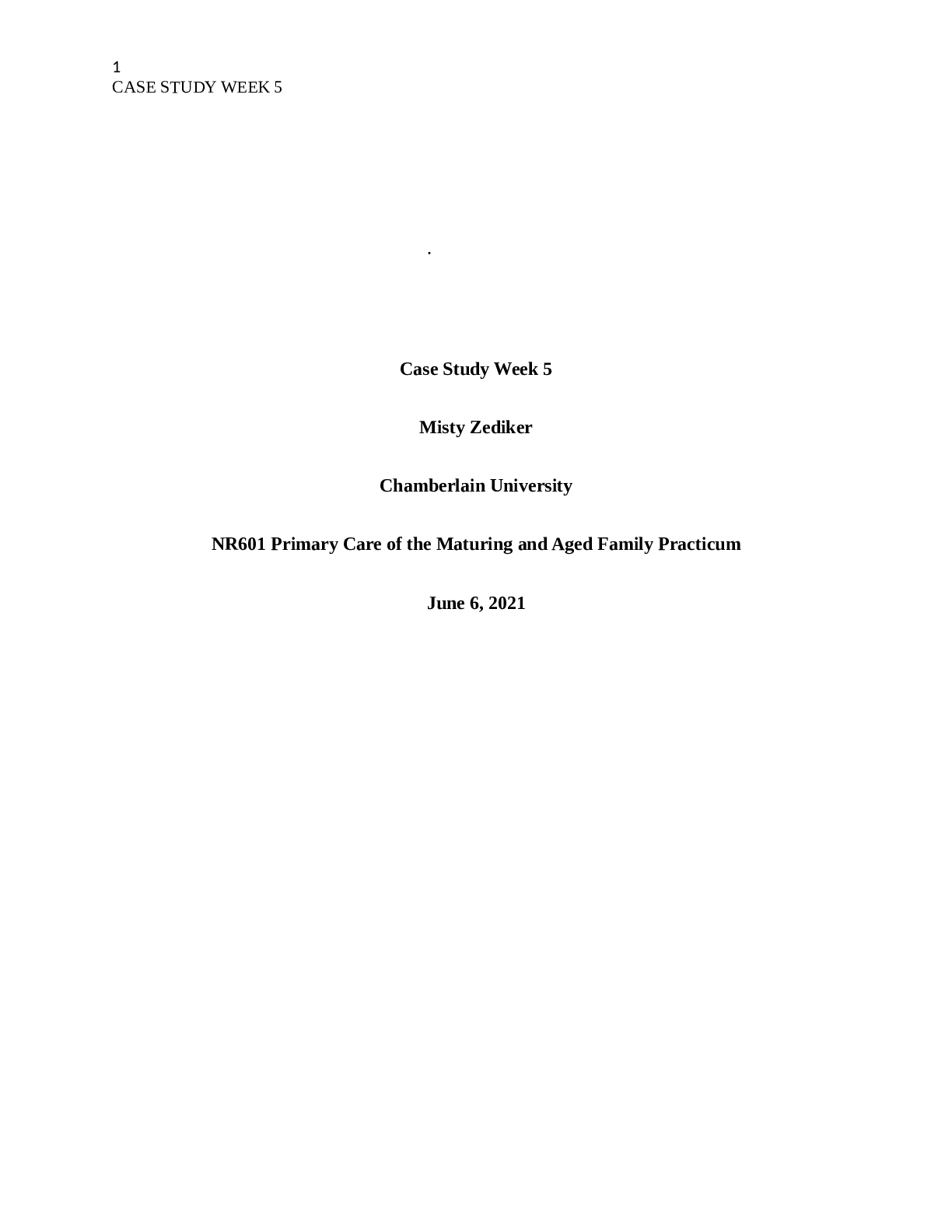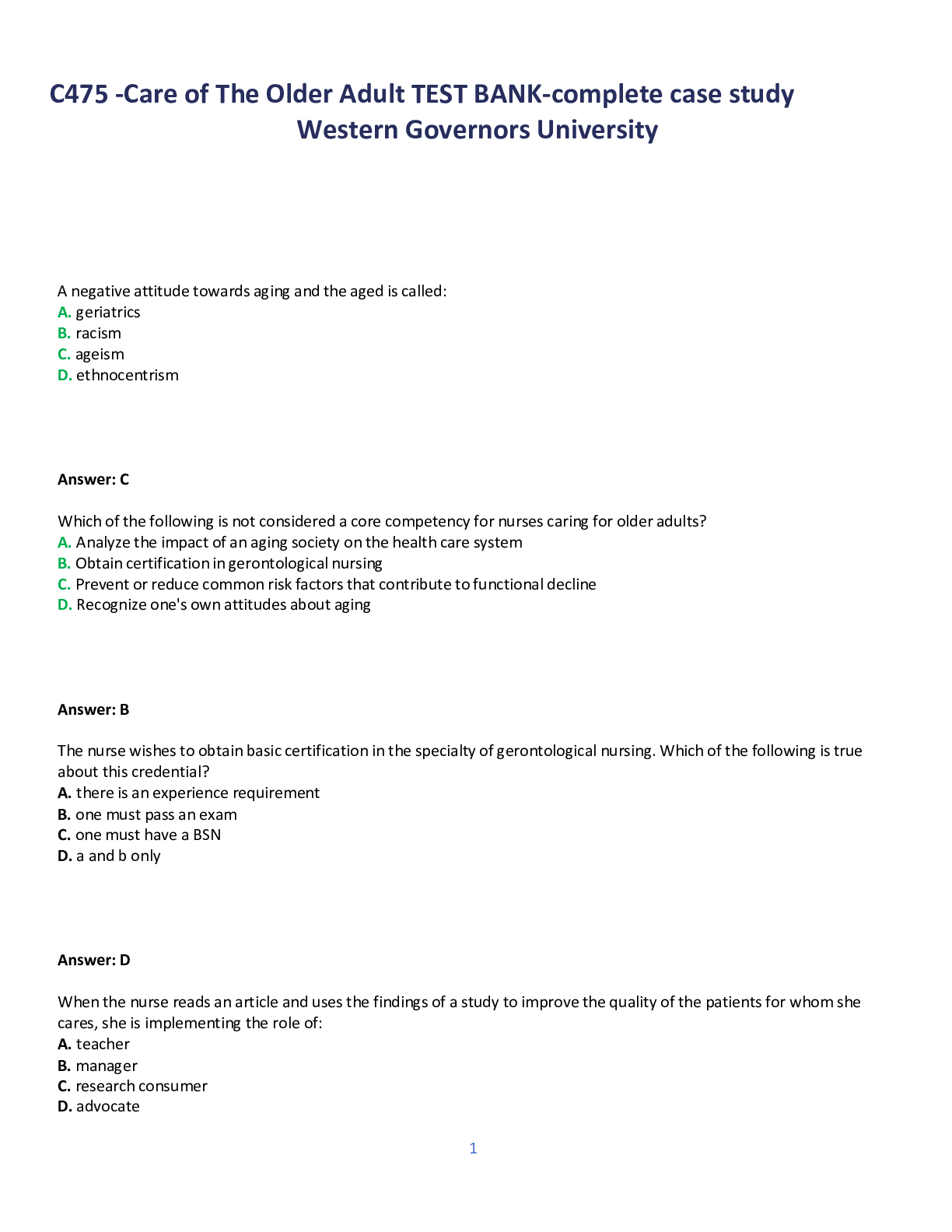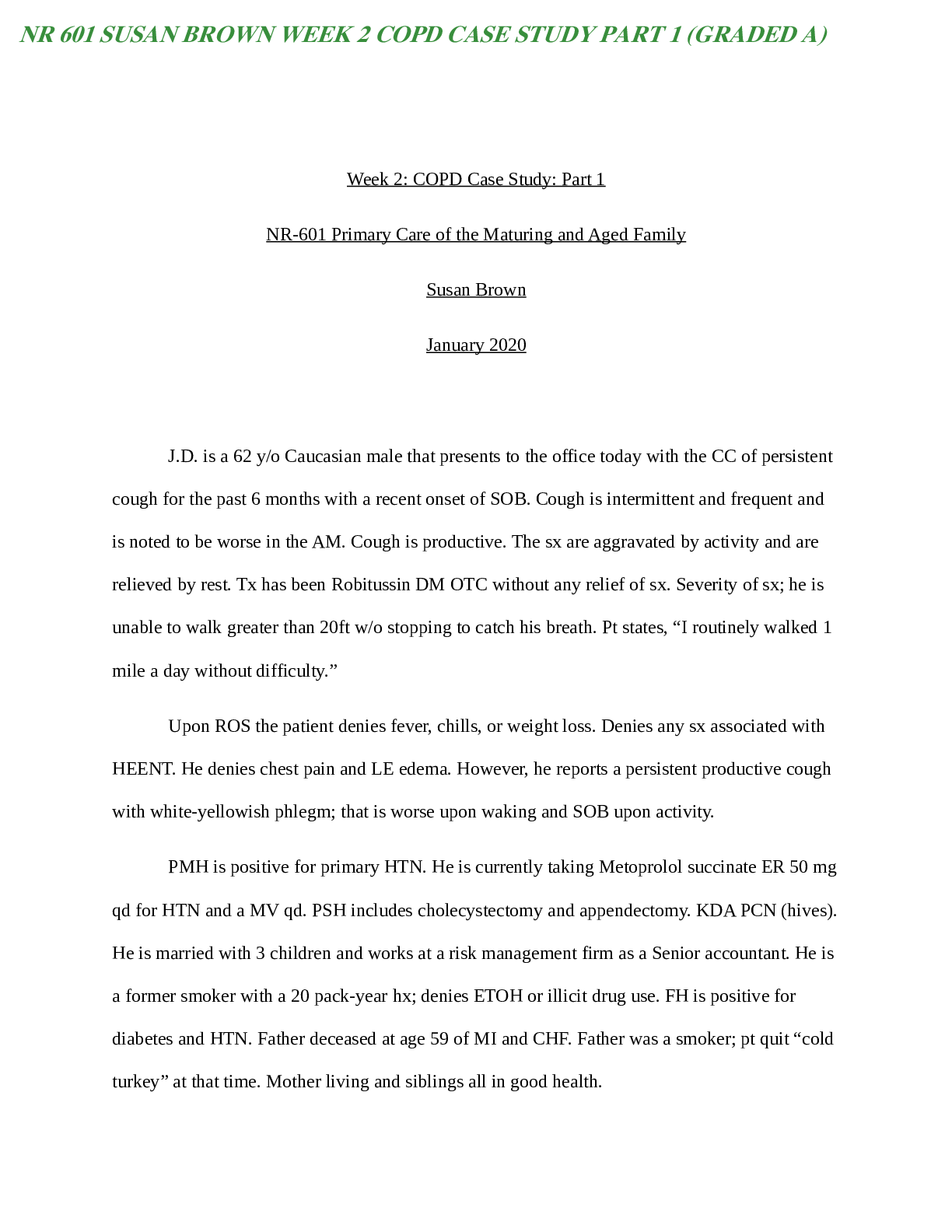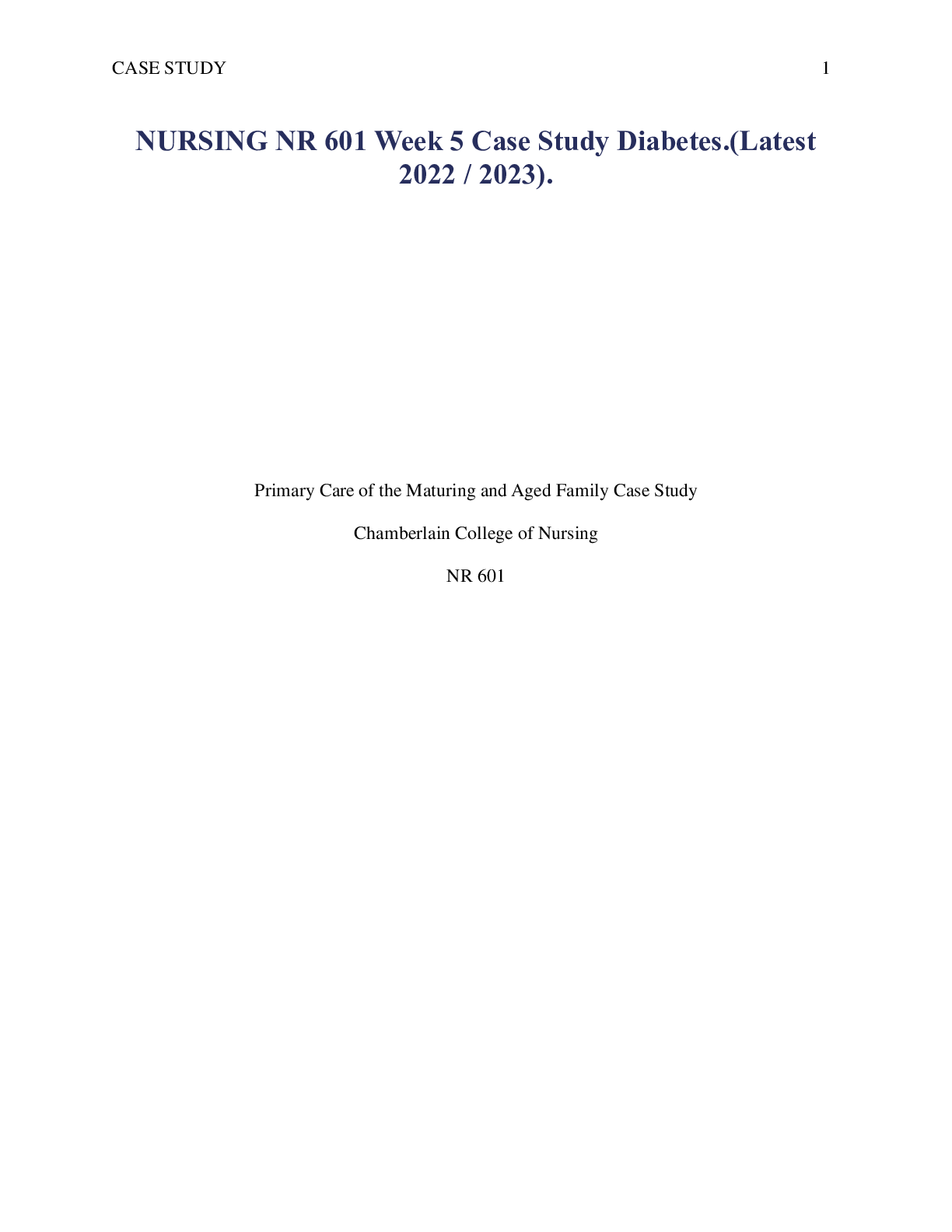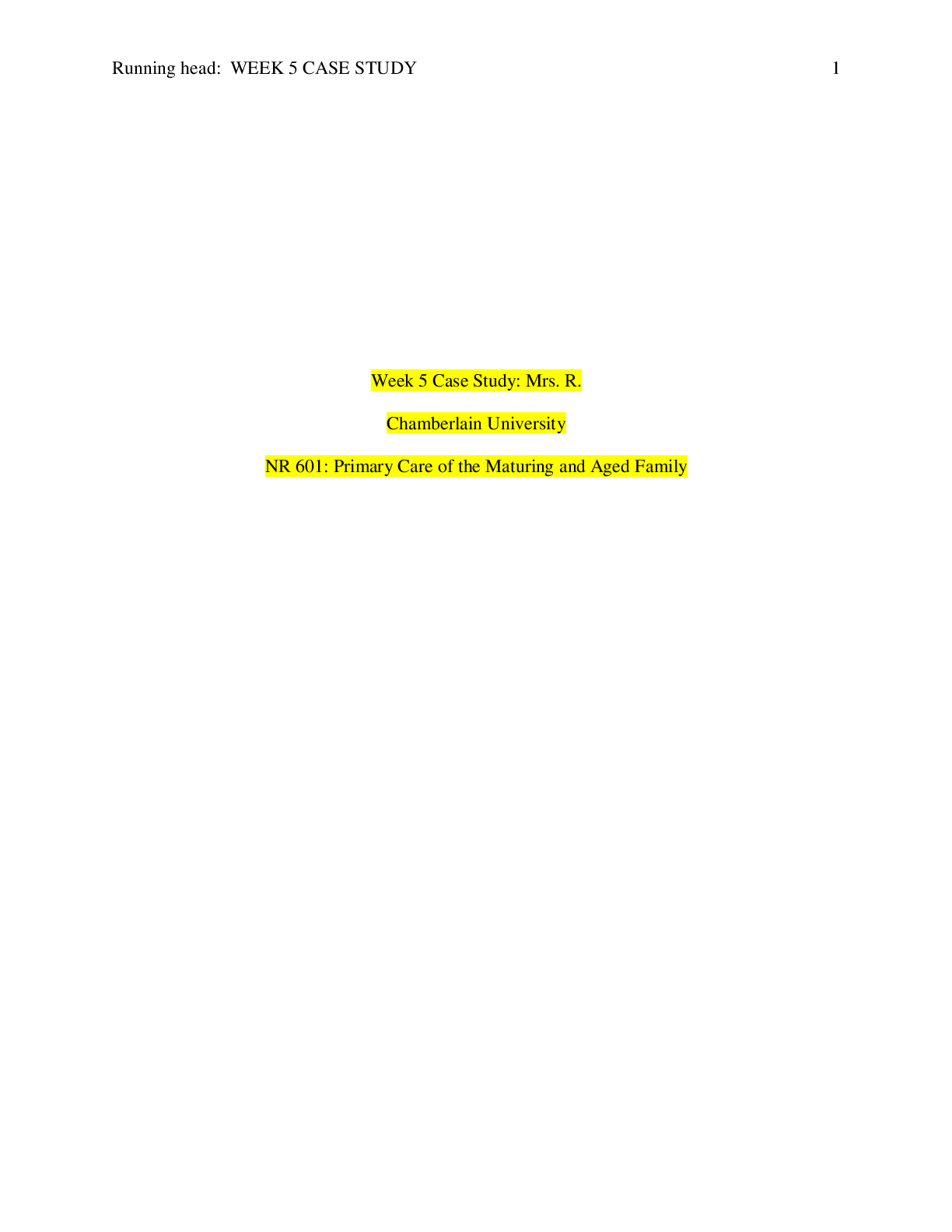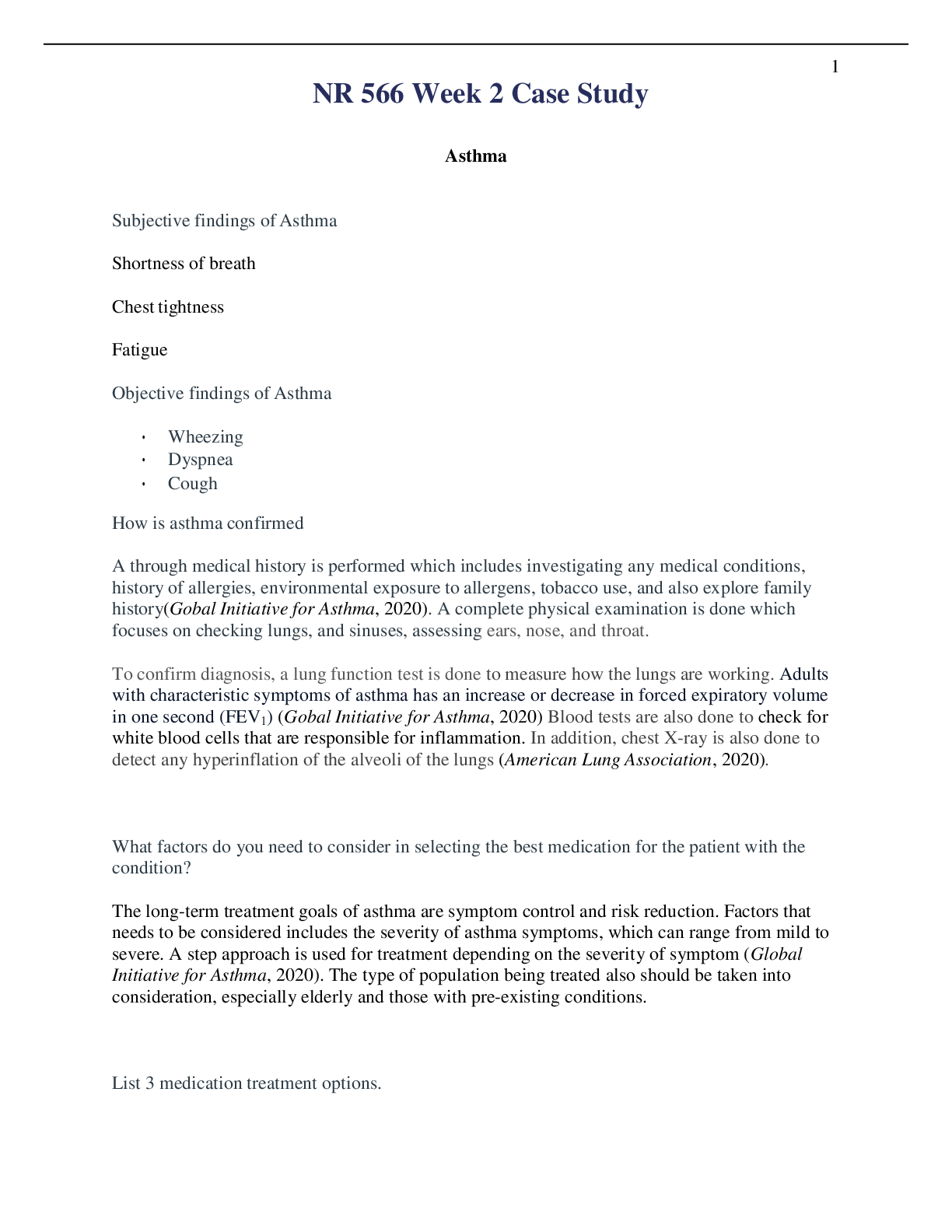Health Care > CASE STUDY > Mr. Jone’s Case Study, Chamberlain College of Nursing, NR 601: Primary Care of the Maturing and Ag (All)
Mr. Jone’s Case Study, Chamberlain College of Nursing, NR 601: Primary Care of the Maturing and Aged Family Practicum Primary Diagnosis: Diabetes type II without complications (E11.9)
Document Content and Description Below
Case Study Chamberlain College of Nursing Nr601: Primary Care of the Maturing and Aged Family Practicum In healthcare, there are many different patients that present with a variety of symptoms... . It is the duty of the practitioner to assess new findings, and link them with subjective and objective findings, patient history and risk factors to assess and treat each unique patient properly. This paper will do just that, as a case study is reviewed of a patient who presents to the office with new complaints; The patient’s possible diagnoses will be reviewed with rationale, as well as a plan of care that would be implemented for the patient, including testing, medication, education, referrals, and follow up; Lastly, the an assessment of comorbidities will be reviewed along with the patient’s average medications costs. By performing this case study, it creates an example of how each patient who presents to an office must be assessed and treated in the primary care setting. Assessment Primary Diagnosis: Diabetes type II without complications (E11.9) Pathophysiology: Skyler et al. (2017) detailed that when a person has type II diabetes, the body develops insulin resistance when excess fat is deposited in different areas of the body, including the muscles, liver and pancreas, which overtime, impairs B-cell function. When this occurs, it is explained that the body does not produce enough insulin in response to increased blood glucose levels, resulting in the signs and symptoms of hyperglycemia; These symptoms include polyuria, polydipsia, increased appetite, fatigue, vision changes, weight changes (initially weight loss) and skin changes. Pertinent positive findings: The patient in this case study presented with complaints of difficulty losing weight, increased hunger and thirst during exercise, polyuria, nocturnal polyuria, and fatigue. The patient’s urinalysis was positive for 1+ glucose and the bloodwork resulting a fasting blood glucose of 135 and a hemoglobin a1c of 6.9%. The patient had a 7lb weight gain after attempting weight loss exercises and diet. Skyler et al. (2017) detailed that having increased hunger, thirst, urination and fatigue are all common symptoms of diabetes. It was also explained that when blood glucose levels are elevated, the kidneys cannot absorb all of the excess and therefore excretes the glucose through the urine. This would confirm that the patient has excess glucose and can aid in the confirmation of the diagnosis of diabetes for the patient. Lastly Skyler et al. (2017) detailed that it in diabetes, the individual will have an elevated fasting blood glucose and an elevated hemoglobin a1c, both of which the patient presented with. [Show More]
Last updated: 1 year ago
Preview 1 out of 12 pages
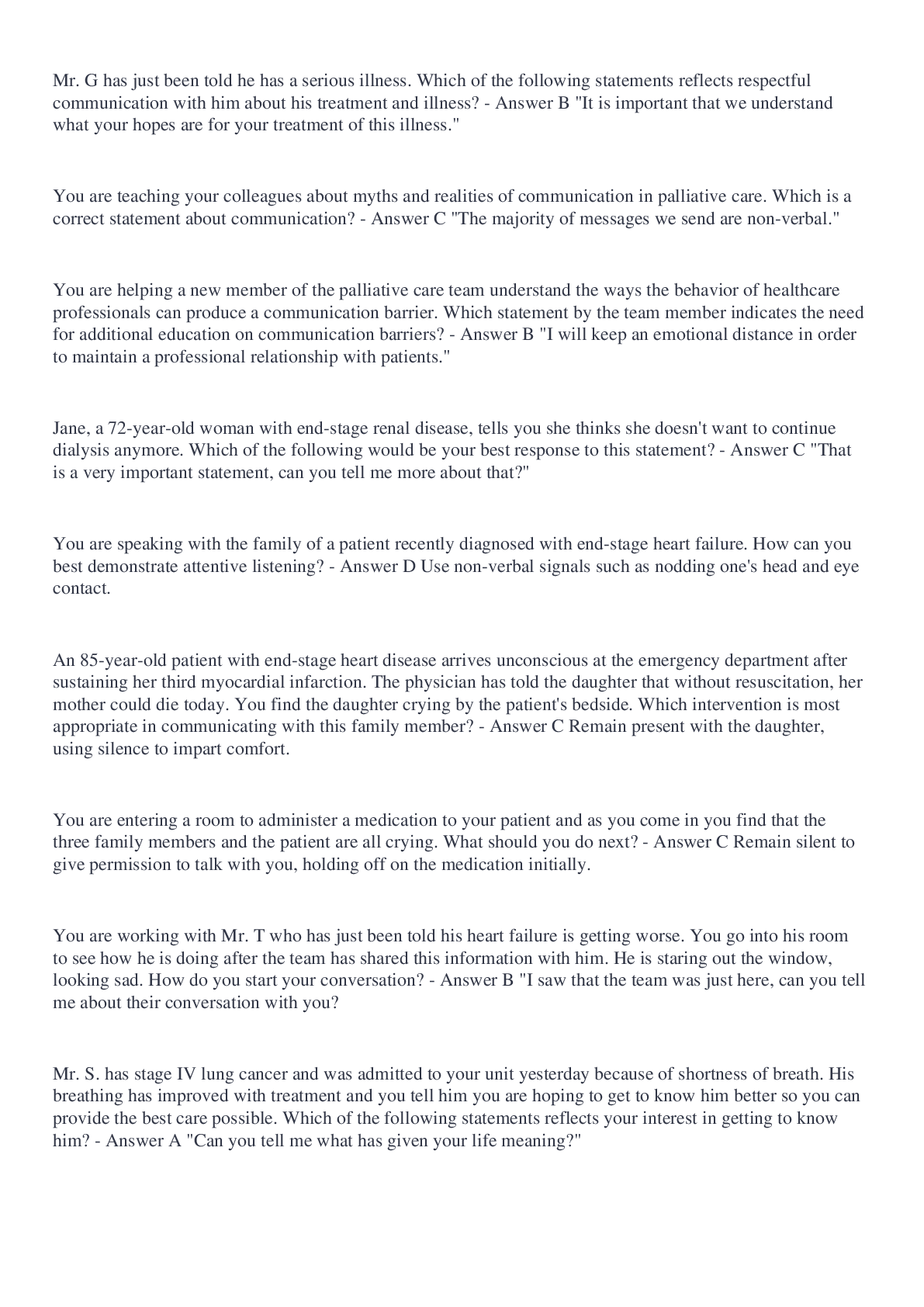
Reviews( 0 )
Document information
Connected school, study & course
About the document
Uploaded On
Jun 13, 2021
Number of pages
12
Written in
Additional information
This document has been written for:
Uploaded
Jun 13, 2021
Downloads
0
Views
47

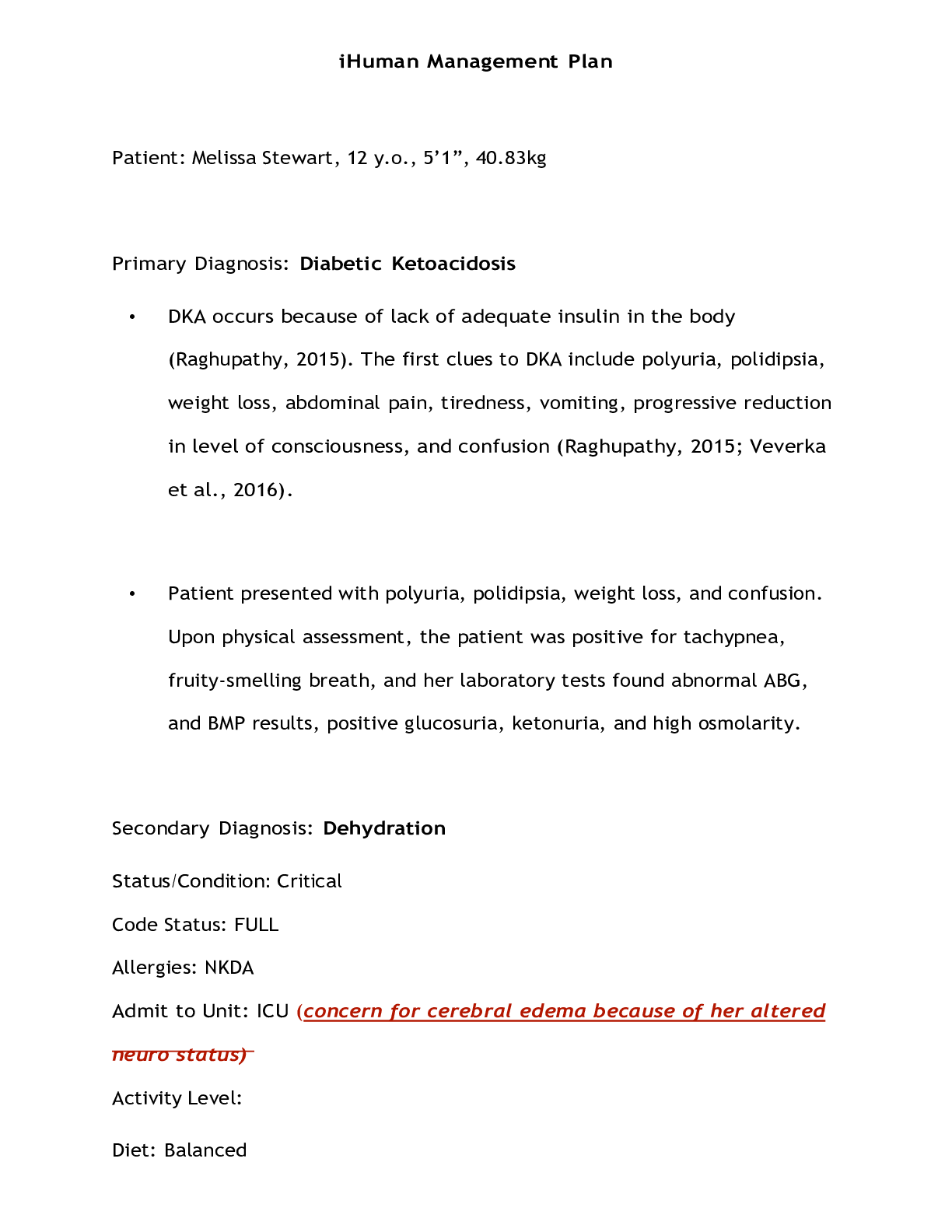


 – Chest Pain Complete Latest Solutions.png)
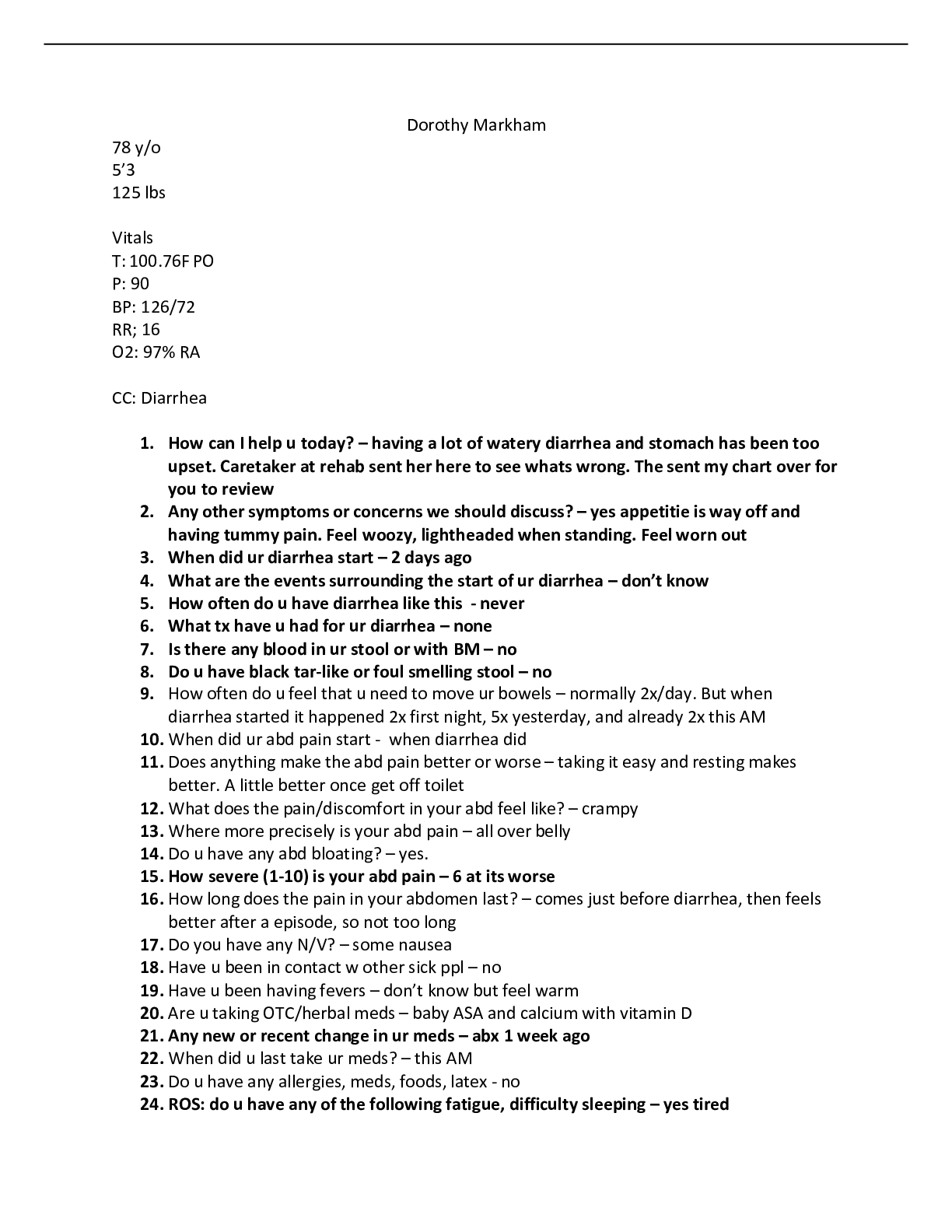
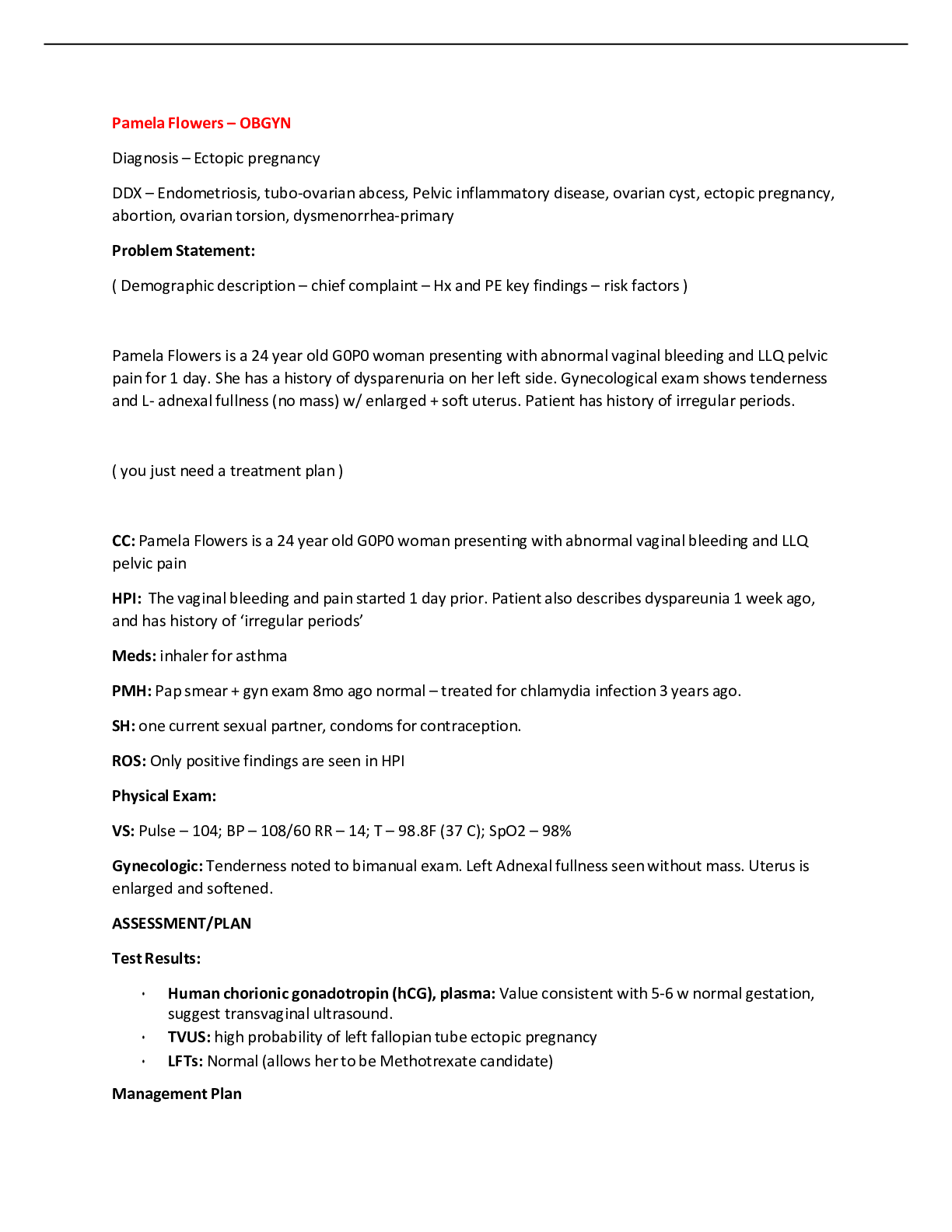
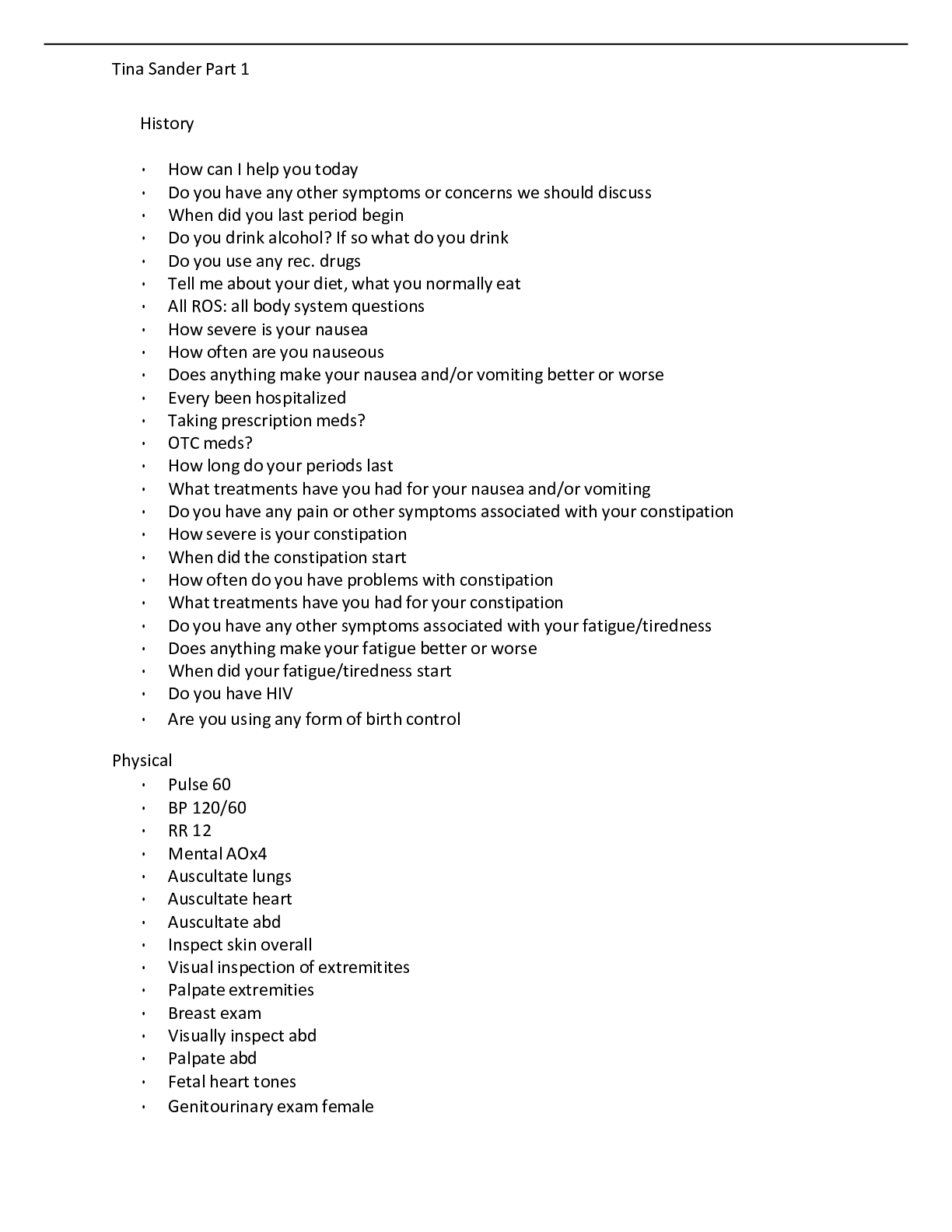

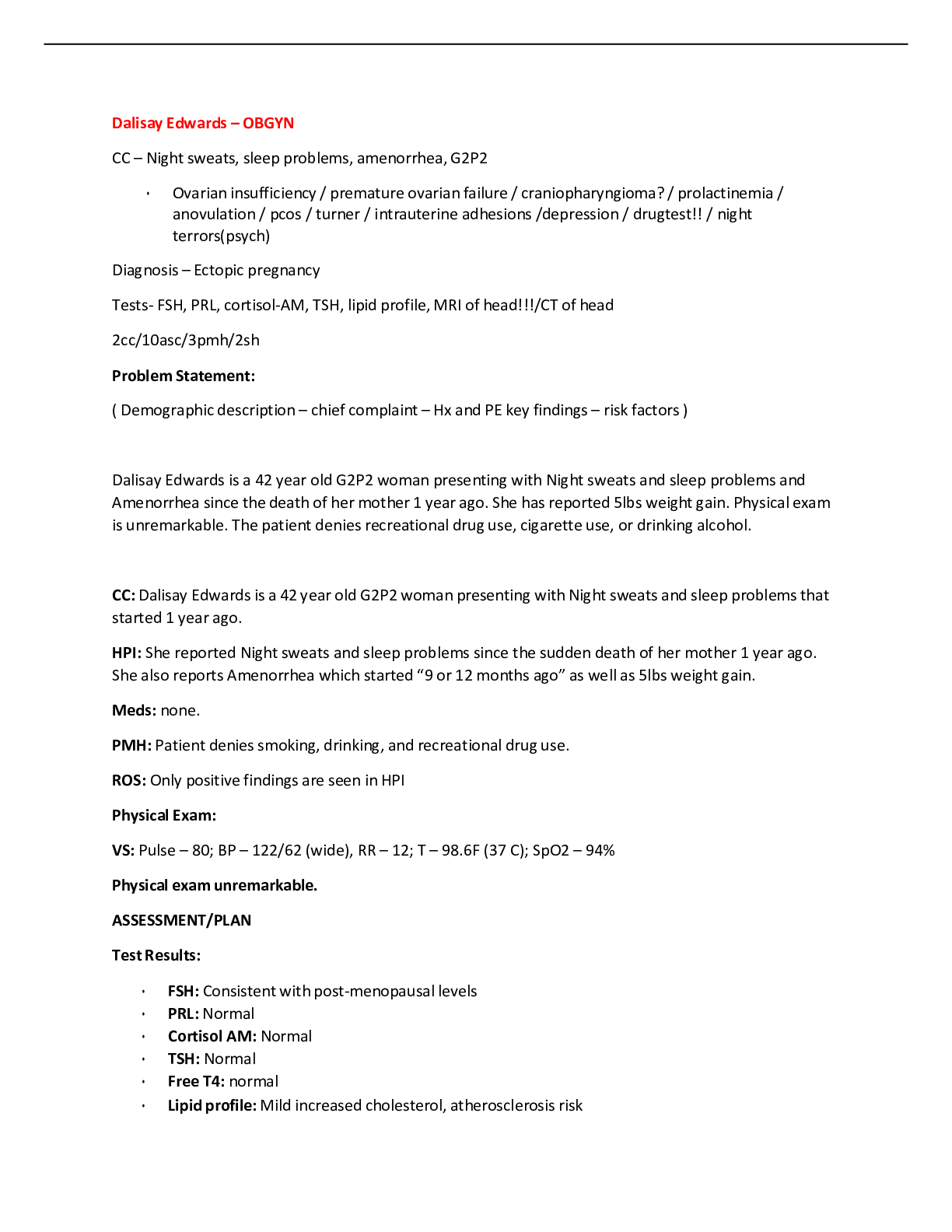






.png)
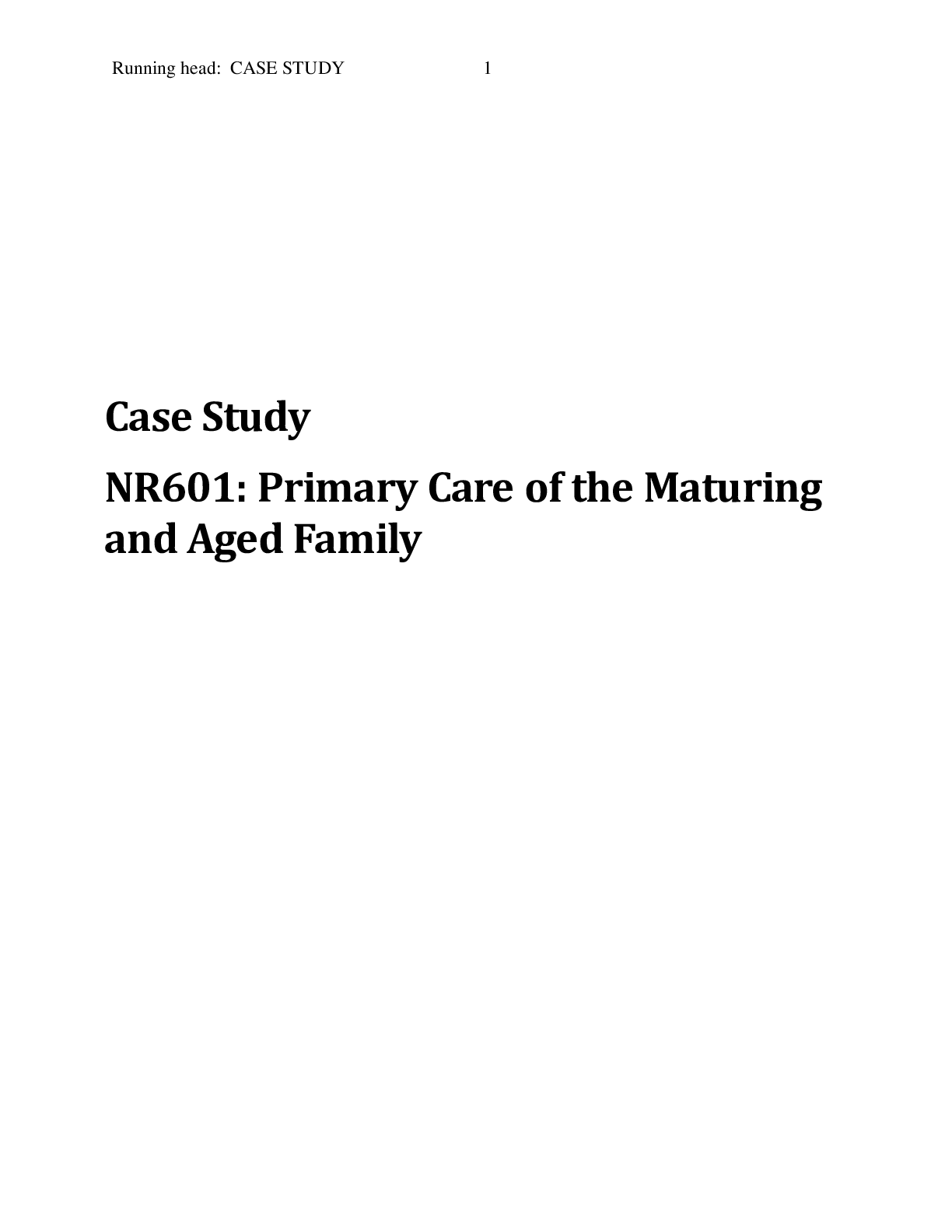





.png)
